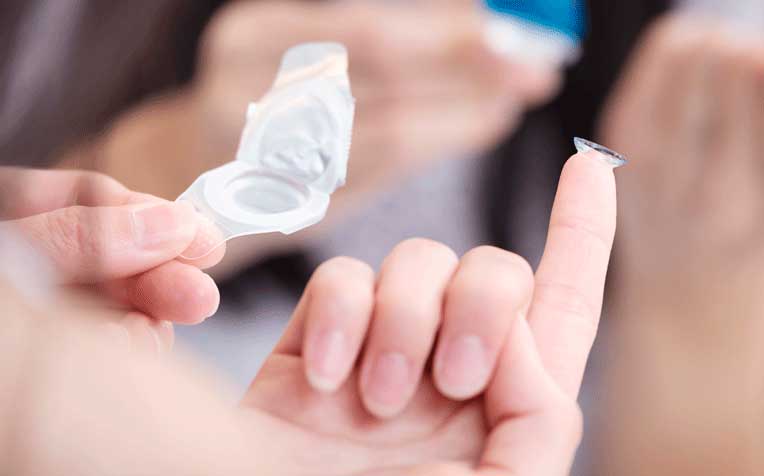HealthXchange will NEVER ask you to transfer money over a call. If in doubt, call the 24/7 ScamShield helpline at 1799, or visit the ScamShield website at www.scamshield.gov.sg.

Contact lens should be worn and cared for properly to minimise risk of damaging the eyes.
Not using and caring properly for your contact lens can have serious consequences on your eyes.
“If severe enough, the infections can lead to blindness,” shared Clinical Associate Prof Lim Li, Senior Consultant, Corneal & External Eye Disease Department, Singapore National Eye Centre (SNEC), a member of the SingHealth group.
On average, doctors see about 50 cases of contact lens-related corneal infections admitted to the Singapore General Hospital (SGH) each year.
Common poor habits include:
- Wearing disposable lenses beyond their recommended duration,
- Soaking lenses in saline instead of disinfectant solutions overnight, and
- Not washing hands before handling the lenses.
“Some of the worse cases involve corneal infections such as acanthamoeba keratitis, especially if the appropriate treatment is delayed and the disease is severe,” said Clin Assoc Prof Lim.
Acanthamoeba keratitis is a rare disease where an organism known as an amoeba invades the cornea. The disease is often associated with contact lens use and may result in permanent visual impairment or blindness. “Infections such as this would have to be treated with corneal transplantation,” she added.
Remember: Contact lenses are medical aids, not cosmetic products, and should be worn with proper care
Examples of patient stories
Cassie*, 15, had been wearing contact lenses for about a year. She got so used to them that one night she forgot to remove her lenses and went to bed. In fact, she did not remove her contact lenses for a few days.
She ended up with a white spot on her cornea which turned out to be an infective corneal ulcer. She needed hospitalisation and intensive antibiotic treatment.
Another patient, Vicky*, 25, reused her daily disposable lenses for a week instead of discarding them daily as required, because she wanted to save money.
One day, while removing her contact lenses, one of them broke and she could only retrieve half the lens. She consulted an ophthalmologist who managed to retrieve the other half, which was hidden in the upper eyelid.
* Patient names have been changed to protect their privacy.
Ref. L20
Check out other articles on contact lenses:
More Tips on How to Clean and Care for Your Contact Lens
Dangers of Contact Lens Misuse
Contributed by
Public Events
Get the Health Buddy App
© 2025 SingHealth Group. All Rights Reserved.














 Get it on Google Play
Get it on Google Play